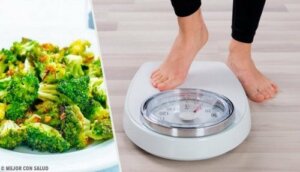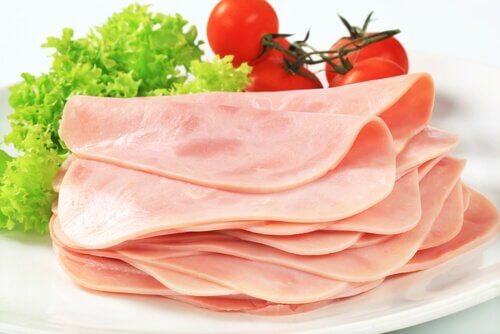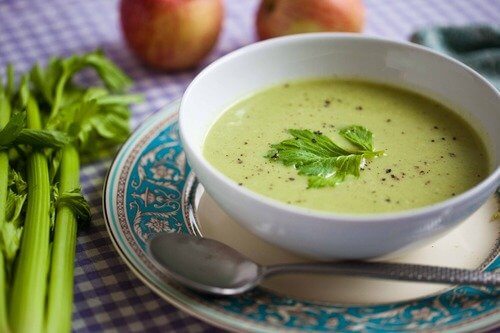Seven Balanced Meals For Losing Weight and Fat


Written and verified by the doctor Karla Henríquez
To lose weight, it’s important to effectively implement several measures at once. In other words: you must improve all lifestyle habits and maintain them over time in a consistent manner.
You shouldn’t just rely on one promising diet, restricting certain foods, a fasting drink, or the occasional 30-minute walk. This is because it’s necessary to make several changes.
It’s possible to be healthier by adopting and maintaining a balanced diet that doesn’t just take into account the objectives you wish to achieve but also takes into account the needs of your body, as well as exercising regularly and avoiding excesses in general.
For those who also aim to lose weight in a healthy way, here are some balanced meals for you.
Breakfast
When it comes to breakfast, it will be important to continue having regular meals, based on having around one cup of skim milk or natural yogurt. You can also drink natural juice or eat a piece of fruit. Furthermore, breakfast is the most important meal of the day you shouldn’t skip it.
Likewise, you can complement your breakfast with some whole wheat toast along with a tablespoon of olive oil or a little bit of turkey or ham. You should avoid eating cookies, pastries or products with butter or marmalade due to being high in sugar and saturated fats.
Discover how the Harvard Eating Plate Can Improve Your Diet
Snacks

At mid-morning and noon, it’s a good idea to eat a light snack that will slightly elevate your blood sugar levels and reduce your appetite. That way you will be better at controlling what you eat during lunch and dinner.
Therefore, your snacks should be based on a large piece of fruit, or two smaller ones, or even a skim yogurt. You could also eat whole-wheat toast with fresh cheese, turkey, a coffee, or an infusion.
Some other options could be:
- Fruit salad
- Nuts and seeds
- A vegetable sandwich
- A fruit and vegetable drink or a glass of vegetable drink (without sugar)
At this point, it’s important to emphasize that portions should be moderate, even if they’re healthy foods. This is because one of the mistakes that prevent people from losing weight is overeating snacks.
Lunches
During lunch and even dinner, you have to be more creative and vary your dishes more often.
So, here are several balanced meals you can use throughout the week that’ll help you lose weight.
- Day 1: start with a salad with lettuce, carrots, tomatoes, and asparagus. Then, chicken breast with white rice. Finally, whole wheat bread with a piece of fruit or an infusion.
- Day 2: mozzarella, tomato, and oregano salad. Baked flounder with spices or vegetable stew. Wheat bread and a fruit salad.
- Day 3: boiled green beans. Then, baked bass with a roasted red pepper salad. Finally, wheat bread and a piece of fruit.
- Day 4: cooked broccoli. Baked rabbit with prunes and mushrooms. Wheat bread and non-fat yogurt.
- Day 5: turkey breast with apple and raisins. Baked or boiled artichoke with garlic. Whole wheat bread with a piece of fruit.
- Day 6: green asparagus salad. Green peppers filled with white rice and turkey. Whole wheat bread and a piece of fruit or an infusion.
- Day 7: room temperature mushroom salad. Garlic rabbit with white wine sauce. Whole wheat bread and non-fat yogurt.
Try out these Five Diets Supported by Science
Dinners

Just like with our lunches, you can make delicious, low-fat dishes for dinner that’ll help you lose weight.
- Day 1: start with some celery and carrot soup. Then, grilled chicken. Finally, fat-free yogurt or a piece of fruit.
- Day 2: an omelet. Vegetable stew. Fat-free yogurt or a piece of fruit.
- Day 3: cream of squash. Mushrooms seasoned with spices. A fruit salad or an infusion.
- Day 4: a cup of gazpacho or served in a bowl with a cooked egg. Vegetable mix. Fat-free yogurt or a piece of fruit.
- Day 5: start with a quash omelet. Then, baked cod with oregano. Finally, some fruit salad or an herbal infusion.
- Day 6: garlic soup with walnuts. Beans with cooked potatoes. Fat-free yogurt or a piece of fruit.
- Day 7: spinach with sliced ham, raisins, and pine nuts. Poached eggs. Fat-free yogurt or a piece of fruit.
Final thoughts about losing weight
As you can see with all of the meals, the dishes can be very different, but all of them are based on lowering the intake of fats and sugars.
- You should avoid eating red meat and eat chicken, turkey, rabbit, or white fish instead
- Eliminating refined sugars, such as white bread or white flour is also an important aspect
In conclusion, the key to these balanced meals for weight loss is to focus on seasonal fruits, vegetables, and fat-free dairy products.
However, it’s important to keep in mind that eating healthy isn’t the same as starving yourself or always eating the same thing but to take note of how healthy food combinations and light preparations can be made in order to maintain a diet in accordance with your body’s needs.
Who can help you lose weight?
If you have doubts about how to follow a balanced diet, you can always consult your doctor or a nutritionist. Furthermore, these professionals will be able to tell you what’s most suitable for you, depending on your special needs.
As we’ve discussed, in order to effectively lose weight and fat you don’t have to starve yourself or adopt extravagant habits, but learn to improve your lifestyle habits and make smart choices.
All cited sources were thoroughly reviewed by our team to ensure their quality, reliability, currency, and validity. The bibliography of this article was considered reliable and of academic or scientific accuracy.
- Aragon, A. A., Schoenfeld, B. J., Wildman, R., Kleiner, S., Van Dusseldorp, T., Taylor, L., Earnest, C. P., Arciero, P. J., Wilborn, C., Kalman, D. S., Willoughby, D. S., Campbell, B., Arent, S. M., Bannok, L., Smith-Ryan, A. E., Antonio, J. (2017). International Society of Sports position stand: diets and body composition. Journal of the International Society of Sports Nutrition, 14(16), 1-19. https://jissn.biomedcentral.com/articles/10.1186/s12970-017-0174-y
- Hernández-Reyes, A., Cámara-Martos, F., Molina-Luque, R., Romero-Saldaña, M., Molina-Recio, G., & Moreno-Rojas, R. (2019). Changes in body composition with hypocaloric diet combined with sedentary, moderate and high-intense physical activity: a randomized controlled trial. BMC Women’s Health, 19(167), 1-12. https://bmcwomenshealth.biomedcentral.com/articles/10.1186/s12905-019-0864-5
- LeWine, H. E. (26 de marzo de 2024). Taking aim at belly fat. Harvard Health Publishing. https://www.health.harvard.edu/newsletter_article/taking-aim-at-belly-fat
- McCarthy, D., & Berg, A. (2021). Weight loss strategies and the risk of skeletal muscle mass loss. Nutrients, 13(7), 1-18. https://www.ncbi.nlm.nih.gov/pmc/articles/PMC8308821/
- Mayo Clinic. (12 de enero de 2024). Weight loss: feel full on fewer calories. https://www.mayoclinic.org/healthy-lifestyle/weight-loss/in-depth/weight-loss/art-20044318
- Mayo Clinic. (24 de febrero de 2023). Adelgazamiento: cómo escoger la dieta adecuada. Consultado el 23 de agosto de 2024. https://www.mayoclinic.org/es/healthy-lifestyle/weight-loss/in-depth/weight-loss/art-20048466
This text is provided for informational purposes only and does not replace consultation with a professional. If in doubt, consult your specialist.








